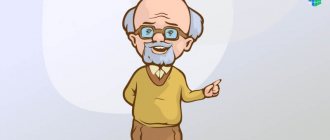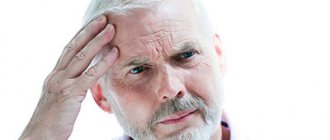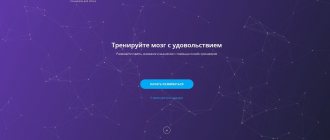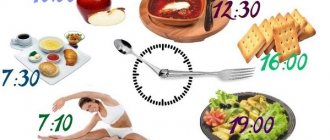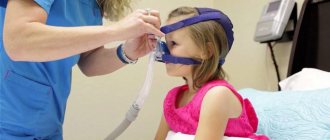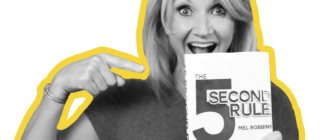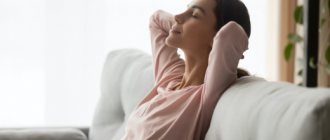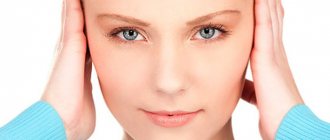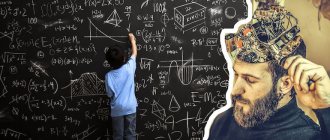Osteochondrosis is currently extremely common. In Russia, more than 60% of people over 50 years of age suffer from it; today it is often diagnosed even in children and adolescents. With this disease, degenerative processes develop in the intervertebral discs, which leads to pathological changes in the musculoskeletal and nervous systems. Everyday pain in the back and neck limits the motor activity and ability to work of a patient with osteochondrosis. This disease can cause constant psychological stress, migraines, numbness of the limbs, and increased fatigue. Fortunately, currently, those suffering from osteochondrosis have access to highly effective treatment of the spine using kinesitherapy, which includes sets of exercises for the development of the musculoskeletal system, adaptive and articular gymnastics and special massage.
What is unacceptable to practice with osteochondrosis?
People diagnosed with this pathology should refrain from the following actions:
- Lifting and carrying heavy objects, especially on the back. If it is not possible to completely abandon such work, then when lifting massive things you should not tilt your head or bend your back too much.
- Long-term work in a bent position (for example, on a plot of land or when cleaning a room).
- Sharp, impetuous and careless movements, accompanied by crunching in the joints and spine. They can cause complications of osteochondrosis and damage the contact surfaces of the vertebrae.
- Using a high or uncomfortable pillow for night rest. This is even more dangerous with cervical osteochondrosis. With an incorrect and tense posture during sleep, the back muscles become tense, the pain worsens, and the spine, being curved, continues to deform.
- Sleeping on a too soft bed (sofa) and mattress. The bed in patients with osteochondrosis should be quite rigid.
- Binge eating. Body weight above normal in osteochondrosis is a significantly aggravating factor for the course of the disease. Therefore, you should lose excess weight as quickly as possible.
- Wearing uncomfortable high-heeled shoes. It does not allow you to fully rest on your feet, which aggravates the curvature of the spine and leads to the development of osteochondrosis. With this disease, it is necessary to ensure correct posture; for this, in particular, you should use comfortable low-heeled shoes.
- Overloading the back during exercise in the gym. It is worth noting that strength exercises during the treatment of osteochondrosis or during the rehabilitation period after it should be carried out under the supervision of a specialist.
Those suffering from this disease should not indulge in foods and drinks high in caffeine, as this alkaloid removes calcium from the body. Also, with osteochondrosis, you should not abuse alcoholic beverages, which contribute to the occurrence of edema in the spine and the removal of mineral substances from the bones.
Classic head and neck massage
An additional stimulation to restore the flow of liquid connective tissue and increase the elasticity of blood vessels in the brain center is a massage of the collar area of the head and cervical region. Massage techniques are performed in the form of compressions and stroking:
- The area of the shoulders and neck is kneaded from the periphery to the center of the spine;
- The head area is massaged with your fingertips, making circular movements (alternating finger pressure followed by relaxation).
This warm-up can be used at home.
Therapeutic exercise is the main method of preventing diseases of the vascular center and has a general strengthening effect on the entire body.
How to do an exercise to develop your brain
Exercises to activate brain activity are best performed in the morning, when all body systems have already switched on after a night's rest and are ready to work. Before you begin the exercises, you should spend a few minutes meditating. If you can’t concentrate on one subject, you can simply sit for a few minutes with your eyes closed. This helps you tune in to the exercise and feel your body better.
Exercise for brain development:
- Stand straight, feet shoulder-width apart, arms down.
- Press your tongue against the roof of your mouth so that the tip rests on your upper teeth.
- Cross your arms over your chest so that your right hand is on top.
- With the fingers of your left hand, grasp the lobe of your right ear, and with the fingers of your right hand, grasp the lobe of your left ear. The thumbs should be on the outside of the ear, and the index finger should be on the outside.
- Keeping your fingers on your earlobes and your tongue pressed to the roof of your mouth, slowly do a deep squat. As you bend your legs, you need to take a deep breath. Sitting down, hold your breath for 1 second.
- Slowly rise as you exhale to the starting position.
You need to repeat the exercise for 1-2 minutes. Daily repetition of such squats helps restore damaged neural connections and form new ones. It should only be performed in the morning and during your lunch break at work. Activating your brain in the evening is harmful. Before going to bed, he enters a state of rest in order to process the information received during the day. If the brain is forced to work actively during this period, it will not be able to recover normally during sleep.
Gymnastics for hypertensive patients
It is important to do head and brain exercises if you have high blood pressure. Vascular walls do not relax during hypertension, which means blood does not pass through them well. Fatty deposits make the situation worse. If left untreated, regular pressure surges can lead to serious illnesses.
If you have hypertension, do not bend or wave your arms, which increases blood flow to the brain. You should not hold your breath during muscle tension - this will increase the pressure.
The following exercises are suitable for hypertensive patients:
- Walking with body rotation. You can perform smooth rotations of the pelvis. The duration of the lesson is no more than 5 minutes.
- Sit on a chair. Raise your arms above your head. Stretch your legs. Slowly bend towards your knees, keep your neck straight, looking forward.
- In a standing or sitting position, while inhaling, spread your arms to the sides, while exhaling, lower them to your waist and tilt your torso to the right. Repeat the movement tilting to the left.
It has long been known that dancing and yoga for the blood vessels of the brain are an ideal means of treatment and prevention. With such loads, the vestibular apparatus is trained, blood circulation improves, and vascular tone increases. They also relieve psycho-emotional tension and stressful conditions - which is extremely important for vascular health.
Strengthening the blood vessels of the legs - a confident step into a healthy life
The “payback” for walking upright is the increased load experienced by the veins of the legs. Weakness of the leg veins can lead to stagnation of blood, and as a result, serious damage to the veins. There is no better way to prevent vascular diseases in the legs than movement. To reduce the load on the lower limbs, it is more effective to perform exercises in water. Swimming, water aerobics, taking balneological baths and even simply pouring cool water on your feet stimulates blood circulation and causes the blood vessels in your legs to contract and unclench with greater intensity. Such regular exercise for the vessels helps to strengthen them and makes the walls of the leg veins more elastic.
A set of exercises aimed at strengthening the blood vessels of the legs
- I.P. – standing on the floor, feet wider than shoulders. Bend forward and down, reaching the floor surface with your fingers. When performing bends, keep your legs straight.
- I.P. - sitting on the floor. Spread your legs as wide as possible, fold your arms at chest level, leaning forward to reach the floor with bent arms. Make sure your legs remain straight. After every 8-10 bends, take a minute break.
- I.P. - on my knees. Stretch your arms to the sides and start walking on your knees back and forth. If you are tired, lie down on the floor and restore your breathing.
Exercises to prevent venous insufficiency of the legs and varicose veins
Slow jogging is useful for improving the health of blood vessels in the legs. If you approach training without excessive fanaticism, dosing the intensity of the load and the duration of runs, then the benefits will be undoubted. Contraindications for training may include:
- Eating shortly before a run;
- Noise or buzzing in the ears;
- Weakness in the legs;
- Severely reduced blood pressure.
If you experience excessive fatigue or discomfort while jogging, it is better to stop, do a few breathing exercises to restore your breathing, and start walking. The intensity of training should be increased only when the body fully adapts to the increased physical activity.
Video: preventative exercises for legs
Contraindications for yoga
You cannot perform inverted asanas if you have diseases of the cardiovascular system or osteochondrosis. Exercise accelerates blood flow, increasing pressure on the walls of blood vessels. If the vessels are pinched by salt deposits, the blood cannot circulate normally and the outgoing capillaries may burst. Also, inverted asanas can provoke an increase in intracranial pressure, so you should consult a doctor before starting classes.
Salamba Sarvangasana
“The mother of all asanas” is what this yoga pose is called. Salamba Sarvangasana, when performed regularly, helps get rid of many diseases of the internal organs. But, since we are interested in the brain, let us dwell in more detail on the benefits that this asana brings to it. Firstly, those who engage in intense intellectual activity are familiar with headaches caused by overexertion. By performing Salamba Sarvangasana, you will forget about headaches, insomnia, and calm your nerves. The asana also relieves high blood pressure and calms the mind. You can read the technique for doing it here.
Breathing techniques to improve brain function
The brain needs a regular supply of oxygen to function properly. Shallow breathing does not fill the entire volume of the lungs and often leads to oxygen starvation. To stimulate deep breathing, yogis use special exercises - pranayama.
Full Yogi Breath
This exercise is recommended to be performed before difficult work to get rid of obsessive thoughts. The technique requires concentration on the breathing process and switches attention:
- You need to sit down, relax and close your eyes. You cannot cross your arms and legs.
- Exhale sharply, trying to expel all the air from your lungs.
- As you inhale, slowly let the air in, watching how it fills all parts of the lungs.
- As you exhale, feel the air leaving and your lungs becoming empty. When pushing out the air, you need to help yourself with your abdominal muscles.
- Take several normal breathing cycles to relax your muscles.
In total, you need to perform at least 10 full breathing cycles. The exhalation should be twice as long as the inhalation - carbon dioxide should be retained a little in the lungs, since it is necessary for the normal functioning of metabolic processes. After the exercise, you should not get up suddenly; you should sit quietly for a couple of minutes until normal breathing is restored.
Alternate breathing
Having mastered full breathing, you can add another exercise that increases concentration and clears your mind. Alternate breathing can be done several times a day to renew your energy reserves. You need to sit up straight, take a deep breath several times and exhale sharply. Close your right nostril with your fingers and breathe through the left nostril. Take 2 breathing cycles and move your fingers to the right nostril. Make breathing cycles through the left nostril. Remove your fingers and take a few normal breaths. Repeat breathing cycles 6–10 times.
What are the benefits of brain development?
The brain develops most actively between the ages of 3 and 7 years. During this period, the child remembers the bulk of his vocabulary, actively explores the world and remembers many times more information every day than an adult. During adolescence, brain activity gradually decreases and by the age of 25 it practically stops. At this age, a person, as a rule, finishes learning, and neuronal activity begins to decline sharply.
In order for neural connections to continue to form at the same speed, a person constantly needs to occupy the brain with new information. Any activity is suitable: from learning a foreign language to computer games. When processing unfamiliar information, the brain forms new neural connections - synapses. The number of these connections can reach several trillions. The more synapses are formed daily, the more active the brain is and the better the conduction of electronic impulses.
In addition to constantly gaining new experience, you can stimulate brain activity with a special exercise. It improves blood supply to the brain, stimulates the functioning of both hemispheres and allows the formation of new synapses in a few minutes a day.
Therapeutic exercise after heart attacks and strokes
Exercise not only helps prevent cardiovascular disease. Rehabilitation therapy in the post-infarction period involves the mandatory introduction of physical therapy exercises. The first complex of exercise therapy is prescribed to be performed while still in the hospital, under the supervision of a doctor. But even after discharge, the patient should perform special exercises daily, alternating between feasible exercise and relaxation, for at least half an hour. To restore the myocardium, a full supply of blood and nutrients is required, and this requires feasible physical activity.
Exercises on a chair, consisting of alternately raising and lowering the legs and arms, are performed at a leisurely pace, with strict adherence to the rhythm of breathing. Walking in one place, bending to the right and left, swinging your legs - these exercises should be done while controlling your pulse. The heart rate should not rise above 120 beats per minute.
A stroke can also be compensated by using massage and exercise therapy. To restore the body's lost ability to move, it is necessary to exercise systematically and diligently. The first exercises will have to be done with an assistant, but after some time, the patient will be able to perform the complex selected by the doctor independently. During physical therapy after a stroke, it is important to avoid overwork and excessive stress. Regularity and systematicity in exercise therapy classes can restore the joy of movement.
Does yoga increase brain activity?
Numerous studies confirm that schoolchildren and students definitely need to do yoga for the mind. Yoga exercises for the mind, which increase the neural activity of the brain, improve the performance, memory and concentration of students. Yoga for brain activity is also indicated for older people, especially those suffering from Alzheimer's disease. Exercise eases the course of the disease and enhances the therapeutic effect of medications.
In America, yoga therapy is prescribed as a preventative measure. This simple method, called supri yoga, increases brain activity and overall performance.
Official medicine confirms that there are many active points on the human body that are responsible for the functioning of specific organs. They are called acupuncture. By influencing the points, a person can relieve pain, direct blood flow to the desired organ and activate its work. The points responsible for brain function are located on the earlobes. By pressing them, yogis synchronize the work of the hemispheres, improve blood circulation and activate the development of sensory connections by 1.5–2 times.
